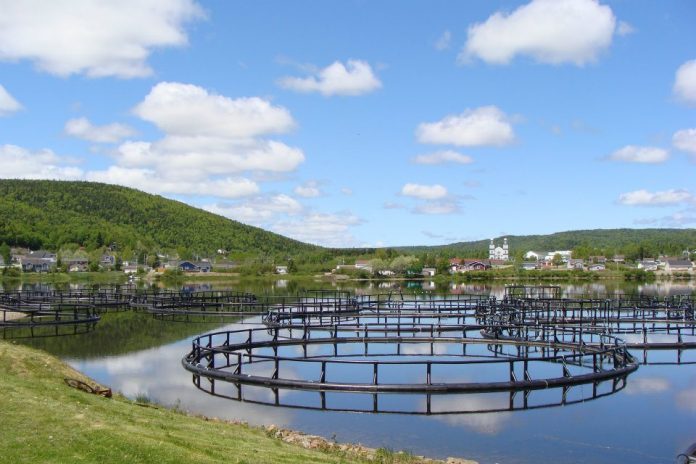Newfoundland and Labrador saw a record salmon harvest in 2016 that reached CAD263 million in value, and only the province’s demographics and vastness threaten further growth, recent research suggests.
The Canadian province saw a 77 percent year-on-year rise in market value and a 29 percent hike in production to 28,622 tonnes from 88 commercial sites totalling 2,500 hectares. Strong prices and exchange rates helped secure the values.
“Through dedication and determination, hard-working Newfoundlanders and Labradorians have achieved the highest levels of production of premium farmed seafood in our province’s history,” stated Mark Lane, spokesman for the aquaculture industry in the province. However, speaking to Salmonbusiness.com, Mr. Lane affirmed the Memorial University research which says salmon harvests are taking place in rural areas with shrinking, aging populations.

“Even though 2016 realized the largest harvest of farmed (salmon) in our province’s history, there was an actual four-to-five percent decline in the labour force,” Mr. Lane said in an email, adding, “Unlike other industries, we have identified the shortage in skilled labour as a challenge of the future.”
Mr. Lane noted the province’s declining birth rates since the 1960’s — now at 1.45 compared to the national replacement rate of 2.1. The provincial birth rate isn’t enough to counter the workers it loses: Newfoundland supports one of the fastest-aging populations in the country, while young people and young families increasingly settle for “entertainment” and “health” in or near urban centers.
“The province is now at a point where the number of people leaving the workforce each year through retirement or death is exceeding the number of young people entering. Over the next 10 years this gap is expected to widen even further,” Mr. Lane said.

Offshore oil and gas has, as in Norway, lifted all boats, and it’s kept skilled labor in the province while reversing the old trend of “moving away”. The young, however, have sought the energy sector’s high wages and “drawn from the pool of potential entrants into the aquaculture industry.”
A Memorial University study by Jamie Ward, MSc, and Alvin Simms, PhD, identified ‘Demographic Issues Affecting Seafood Processing in Atlantic Canada’ and found that people in “fish processing occupations (are) generally older than (the) provincial workforce”. The study cited low wages compared to other sectors and concentrations of employees in “(rural) areas” 600 to 700 kilometers from St. John’s, or largely along the south (salmon-growing) and north (shellfish) coasts.
Unlike Newfoundland, those employed in aquaculture in other Maritime Canada provinces live largely in towns. Keeping the young interested in a remote-area lifestyle has been a challenge.
Mr. Lane confirmed the industry is aware of the research and, with government help, is conducting a labor-market and training review. A recruitment and retention plan that includes traveling career “roadshows” in rural schools is partly underway.
The goal is an aquaculture learning module in the formal curricula of schools across the province. “We are refining a program called Aquaculture in the Classroom that will educate primary, elementary and high school students about the industry and the career opportunities that exist within it,” he said. For the community colleges, two “comprehensive training programs” — Technical Certificate in Aquaculture and Certificate in Aquaculture Management — have been developed.
Employees of local company, Skretting, have already been showing high-school students different types of fish feed, and visits to Cooke Aquaculture sites have become class trips. The Canadian Food Inspection Agency and Marine Institute have joined some of the tours.
Meanwhile, the Canadian Centre for Fisheries Innovation, aims to give the industry a productivity boost to offset declines in worker numbers. For now, the government-funded Memorial University research community is focused on “productivity enhancements for established commercial species” while its affiliate Marine Institute reaches out to youth with fish “science and tech” online material, career profiles and visits to remote schools.

